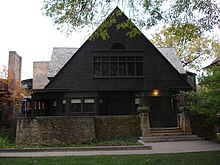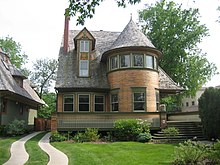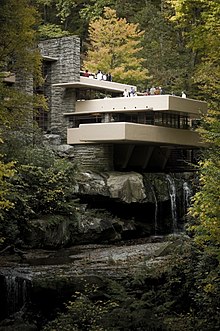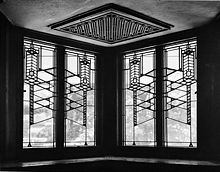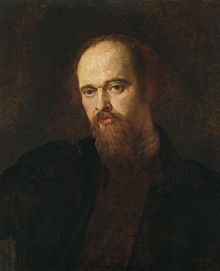 On this day in 1882, English poet, illustrator, painter and translator Dante Gabriel Rossetti died on Easter Sunday at the country house of a friend in Birchington-on-Sea, England, of Brights Disease at the age of 53. Born Gabriel Charles Dante Rossetti on 12 May 1828 in London. He founded the Pre-Raphaelite Brotherhood in 1848 with William Holman Hunt and John Everett Millais, and was later to be the main inspiration for a second generation of artists and writers influenced by the movement, most notably William Morris and Edward Burne-Jones. His work also influenced the European Symbolists and was a major precursor of the Aesthetic movement.
On this day in 1882, English poet, illustrator, painter and translator Dante Gabriel Rossetti died on Easter Sunday at the country house of a friend in Birchington-on-Sea, England, of Brights Disease at the age of 53. Born Gabriel Charles Dante Rossetti on 12 May 1828 in London. He founded the Pre-Raphaelite Brotherhood in 1848 with William Holman Hunt and John Everett Millais, and was later to be the main inspiration for a second generation of artists and writers influenced by the movement, most notably William Morris and Edward Burne-Jones. His work also influenced the European Symbolists and was a major precursor of the Aesthetic movement.
Rossetti’s art was characterised by its sensuality and its medieval revivalism. His early poetry was influenced by John Keats. His later poetry was characterised by the complex interlinking of thought and feeling, especially in his sonnet sequence The House of Life. Poetry and image are closely entwined in Rossetti’s work; he frequently wrote sonnets to accompany his pictures, spanning from The Girlhood of Mary Virgin (1849) and Astarte Syriaca (1877), while also creating art to illustrate poems such as Goblin Market by the celebrated poet Christina Rossetti, his sister. Rossetti’s personal life was closely linked to his work, especially his relationships with his models and muses Elizabeth Siddal, Fanny Cornforth, and Jane Morris. Rossetti married Siddal on Wednesday 23 May 1860 at St Clement’s Church in the seaside town of Hastings. She died of a laudanum overdose on 11 February 1862, and Rossetti buried many of his poems with her. Later, his friends persuaded him to exhume the poetry, which he published in 1870. They were sensual and erotic, and caused a scandal.
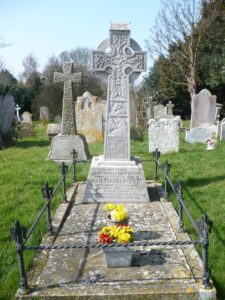 The Final Footprint – Rossetti is interred in the churchyard of All Saints in Birchington-on-Sea, under a tombstone designed by fellow artist, Ford Madox Brown.
The Final Footprint – Rossetti is interred in the churchyard of All Saints in Birchington-on-Sea, under a tombstone designed by fellow artist, Ford Madox Brown.
Gallery
-

The Tune of the Seven Towers (1857), watercolour, Tate Britain
-

Beata Beatrix (1864–1870), Tate Britain (model: Elizabeth Siddal)
-
Pia de’ Tolomei (1868–1880), Spencer Museum of Art, University of Kansas, Lawrence (model: Jane Morris)
-
Proserpine (1874) (model: Jane Morris)
-

A Vision of Fiammetta (1878), one of Rossetti’s last paintings, now in the collection of Andrew Lloyd Webber (model: Marie Spartali Stillman)
-
La Belle Dame sans Merci (1848), pen and sepia with some pencil
-
Sir Tristram and la Belle Ysoude drink the potion, stained glass panel by Morris, Marshall, Faulkner & Co., design by Rossetti (1862–63)
-
Death of a Wombat (1869)
| Frank Lloyd Wright | |
|---|---|
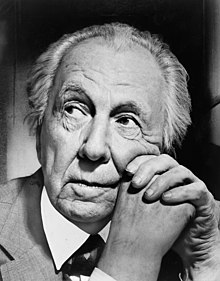 in 1954 |
|
On this day in 1959, architect and interior designer Frank Lloyd Wright died in Phoenix, Arizona at the age of 91. Born Frank Lincoln Wright on June 8, 1867 in Richland Center, Wisconsin. Wright designed more than 1,000 structures, 532 of which were completed. Wright believed in designing structures that were in harmony with humanity and its environment, a philosophy he called organic architecture. This philosophy was best exemplified by Fallingwater (1935), which is in my opinion, the best all-time work of American architecture”. His creative period spanned more than 70 years.
Wright was the pioneer of what came to be called the Prairie School movement of architecture and he also developed the concept of the Usonian home in Broadacre City, his unique vision for urban planning in the United States. In addition to his houses, Wright designed original and innovative offices, churches, schools, skyscrapers, hotels, museums and other structures. He often designed interior elements for these buildings as well, including furniture and stained glass. Wright wrote 20 books and many articles and was a popular lecturer in the United States and in Europe. Wright was recognized in 1991 by the American Institute of Architects as “the greatest American architect of all time”.
On June 1, 1889, Wright married his first wife, Catherine Lee “Kitty” Tobin (1871–1959). The two had met around a year earlier.
Wright developed a reputation in Oak Park as a man-about-town. His family had grown to six children, but Wright was not parental and he relied on his wife Catherine to care for them. In 1903, Wright designed a house for Edwin Cheney, a neighbor in Oak Park, and immediately took a liking to Cheney’s wife, Mamah. Mamah Cheney was a modern woman with interests outside the home. She was an early feminist and Wright viewed her as his intellectual equal. The two fell in love, and they became the talk of the town, as they often could be seen taking rides in Wright’s automobile through Oak Park. Wright’s wife, Kitty, sure that this attachment would fade as others had, refused to grant him a divorce. Mamah had to live in Europe for two years in order to obtain a divorce from Edwin on the grounds of desertion.
In 1909, even before the Robie House was completed, Wright and Mamah Cheney met up in Europe, leaving their spouses and children behind.
Wright published a portfolio of his work with Berlin publisher Ernst Wasmuth. The resulting two volumes, titled Studies and Executed Buildings of Frank Lloyd Wright, were published in 1911 in two editions, creating the first major exposure of Wright’s work in Europe. The work contained more than 100 lithographs of Wright’s designs and was commonly known as the Wasmuth Portfolio.
Wright remained in Europe for almost a year and set up home first in Florence, Italy — where he lived with his eldest son Lloyd — and later in Fiesole, Italy, where he lived with Mamah. During this time, Edwin Cheney granted Mamah a divorce, though Kitty still refused to grant one to her husband. After Wright returned to the United States in October 1910, he persuaded his mother to buy land for him in Spring Green, Wisconsin. The land, bought on April 10, 1911, was adjacent to land held by his mother’s family, the Lloyd-Joneses. Wright began to build himself a new home, which he called Taliesin. The recurring theme of Taliesin also came from his mother’s side: Taliesin in Welsh mythology was a poet, magician, and priest. The family motto, “Y Gwir yn Erbyn y Byd” (“The Truth Against the World”), was taken from the Welsh poet Iolo Morganwg, who also had a son named Taliesin. The motto is still used today as the cry of the druids and chief bard of the Eisteddfod in Wales.
On August 15, 1914, while Wright was working in Chicago, Julian Carlton, a male servant from Barbados who had been hired several months earlier, set fire to the living quarters of Taliesin and murdered seven people with an axe as the fire burned. The dead included Mamah; her two children, John and Martha Cheney; a gardener (David Lindblom); a draftsman (Emil Brodelle); a workman (Thomas Brunker); and another workman’s son (Ernest Weston). Two people survived the mayhem, one of whom, William Weston, helped to put out the fire that almost completely consumed the residential wing of the house. Carlton swallowed hydrochloric acid immediately following the attack in an attempt to kill himself. He was nearly lynched on the spot, but was taken to the Dodgeville jail. Carlton died from starvation seven weeks after the attack, despite medical attention.
In 1922, Kitty Wright finally granted Wright a divorce. Under the terms of the divorce, Wright was required to wait one year before he could marry his then-mistress, Maude “Miriam” Noel. Wright wed Miriam in November 1923, but her addiction to morphine led to the failure of the marriage in less than one year. In 1924, after the separation but while still married, Wright met Olga (Olgivanna) Lazovich Hinzenburg at a Petrograd Ballet performance in Chicago. They moved in together at Taliesin in 1925, and soon Olgivanna was pregnant with their daughter, Iovanna, born on December 2, 1925.
On April 20, 1925, another fire destroyed the bungalow at Taliesin. Crossed wires from a newly installed telephone system were deemed to be responsible for the blaze, which destroyed a collection of Japanese prints that Wright estimated to be worth $250,000 to $500,000. Wright rebuilt the living quarters, naming the home “Taliesin III”.
In 1926, Olga’s ex-husband, Vlademar Hinzenburg, sought custody of his daughter, Svetlana. In October 1926, Wright and Olgivanna were accused of violating the Mann Act and arrested in Tonka Bay, Minnesota. The charges were later dropped.
Wright and Miriam Noel’s divorce was finalized in 1927, and once again, Wright was required to wait for one year before remarrying. Wright and Olgivanna married in 1928.
Taliesin West, Wright’s winter home and studio complex in Scottsdale, Arizona, was a laboratory for Wright from 1937 to his death in 1959. Now the home of the Frank Lloyd Wright Foundation and archives, it continues today as the site of the Frank Lloyd Wright School of Architecture.
 The Final Footprint
The Final Footprint
On April 4, 1959, Wright was hospitalized for abdominal pains and was operated on April 6. He seemed to be recovering but he died quietly on April 9. Olgivanna’s dying wish had been that Wright, she, and her daughter by her first marriage all be cremated and interred together in a memorial garden being built at Taliesin West. According to his own wishes, Wright’s body had lain in the Lloyd-Jones cemetery, next to the Unity Chapel, near Taliesin in Wisconsin. Although Olgivanna had taken no legal steps to move Wright’s remains and against the wishes of other family members as well as the Wisconsin legislature, in 1985 Wright’s remains were removed from his grave by members of the Taliesin Fellowship, cremated and sent to Scottsdale where they were later interred in the memorial garden. The original grave site in Wisconsin, now empty, is still marked with Wright’s name.
#RIP #OTD in 1976 singer/songwriter (“I Ain’t Marching Anymore”, “Love Me, I’m a Liberal”, “Outside of a Small Circle of Friends”, “There but for Fortune”) Phil Ochs died by hanging in his sister’s home in Far Rockaway, New York, age 35. Cremated remains scattered in Scotland
#RIP #OTD in 1988 singer (“Rainy Night in Georgia”), songwriter (“It’s Just a Matter of Time”, “Endlessly”) Brook Benton died from complications of spinal meningitis in Queens, aged 56. Unity Family Life Center Cemetery, Lugoff, South Carolina
#RIP #OTD in 1996 novelist (The Manchurian Candidate, Winter Kills, Prizzi’s Honor) Richard Condon died in Dallas, Texas aged 81. Cremation
On this day in 2001, Pittsburgh Pirate, 7-time all-star, 2-time World Series Champion, baseball Hall of Famer, Pops, Willie Stargell died of complications related to a stroke in Wilmington, North Carolina at the age of 61. Born Wilver Dornel Stargell on 6 March 1940 in Earlsboro, Oklahoma. Known for his towering home runs. Only four home runs have ever been hit out of Dodger Stadium; two were by Stargell. Dodger starting pitcher Don Sutton said of Stargell, “I never saw anything like it. He doesn’t just hit pitchers, he takes away their dignity.” The Pirates won the World Series with Stargell in 1971 and 1979, both times defeating the Baltimore Orioles. The Pirates ’79 team adopted the Sister Sledge hit song “We Are Family” as the team anthem. Stargell earned the NLCS and World Series MVP awards and was named the co-MVP of the 1979 season (along with St. Louis’ Keith Hernandez). Stargell is the only player to have won all three trophies in a single year. I remember the ’79 World Series well. That Pirates team is one of my favorite teams and Stargell is one of my favorite players. The Pirates retired his number 8 in 1982.
Pirate, 7-time all-star, 2-time World Series Champion, baseball Hall of Famer, Pops, Willie Stargell died of complications related to a stroke in Wilmington, North Carolina at the age of 61. Born Wilver Dornel Stargell on 6 March 1940 in Earlsboro, Oklahoma. Known for his towering home runs. Only four home runs have ever been hit out of Dodger Stadium; two were by Stargell. Dodger starting pitcher Don Sutton said of Stargell, “I never saw anything like it. He doesn’t just hit pitchers, he takes away their dignity.” The Pirates won the World Series with Stargell in 1971 and 1979, both times defeating the Baltimore Orioles. The Pirates ’79 team adopted the Sister Sledge hit song “We Are Family” as the team anthem. Stargell earned the NLCS and World Series MVP awards and was named the co-MVP of the 1979 season (along with St. Louis’ Keith Hernandez). Stargell is the only player to have won all three trophies in a single year. I remember the ’79 World Series well. That Pirates team is one of my favorite teams and Stargell is one of my favorite players. The Pirates retired his number 8 in 1982.
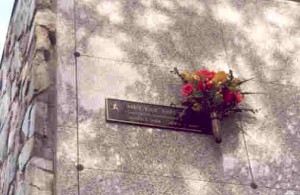 The Final Footprint – Stargell is entombed in a garden mausoleum in Oleander Memorial Gardens in Wilmington. The Willie Stargell statue, a 12-foot bronze statue, at PNC Park in Pittsburgh was unveiled in April 2001.
The Final Footprint – Stargell is entombed in a garden mausoleum in Oleander Memorial Gardens in Wilmington. The Willie Stargell statue, a 12-foot bronze statue, at PNC Park in Pittsburgh was unveiled in April 2001.
#RIP #OTD in 2011 film director (12 Angry Men, Dog Day Afternoon, Network, The Verdict, Before the Devil Knows You’re Dead), screenwriter Sidney Lumet died in his residence in Manhattan from lymphoma, aged 86. Beth David Cemetery, Elmont, New York
Have you planned yours yet?
Follow TFF on twitter @RIPTFF























